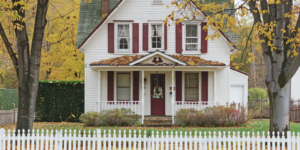How do I get a piece of land for my tiny house?

Living in a tiny house has great advantages. It contributes to a better environment, you have lower housing costs and therefore more free time, you collect less stuff and you are more in contact with nature. A ready-made tiny house can be obtained for 50,000 euros, but then? Because that house must of course be on a piece of land and although more and more municipalities are open to tiny houses (especially at election time), it turns out that this is not so easy to realize in the middle of a housing crisis. Marjolein Jonker of Marjolein in ‘t Klein and Tiny House Netherlands gives tips. Also, let us know your experience by visiting DHA Files Lahore.
1. Register with the tiny house registry
Marjolein has opened a register for (prospective) tiny house residents. If you register here, you will be kept informed of new developments in your region by e-mail. Think of tiny house projects for which you can register, but also of land that is cleared for tiny houses or consultation evenings about tiny houses. The administrative costs for registration in the register are 17.50 euros per year.
2. Take the online course
Marjolein has developed an online course that explains step by step how you can realize your tiny house and therefore also how to get the land for your tiny house. You can start the course at any time. Four times a year there are live meetings where you go deeper into a theme and can exchange ideas with like-minded people. Think of an excursion or a tiny house information market. In this way, you will be better prepared for discussions with, for example, the municipality or housing associations.
3. Join an initiative group
It works better to talk to the municipality about tiny house projects as a group than on your own. You can start an initiative group yourself or you can see if you can join an existing group. For the latter, you can take a look at the register (step 1) or in the private Facebook group of Tiny House Netherlands where you can post a call. Anyone can become a member here after answering a few questions. If you start a group yourself, it is important to also think about the legal form (a foundation or association, for example) and it is smart to put a good plan on paper. As a group, it is not only easier to approach the municipality, but also housing corporations. “More and more municipalities are open to tiny houses,” says Marjolein. “In Roermond, for example, they have sat down with residents and in Groningen, for example, they also want to build tiny houses.” In this case, it is about tiny rental houses.
4. Buy a building plot
Finding a building plot can be just as complicated as finding a house, but quite a few people have succeeded. You can look for this on Tiny Findy (a kind of marketplace for tiny houses and everything related to it) or you can look at the site of Self-build in the Netherlands (ZIN). Here you will find an overview of building plots and there is a newsletter to which you can subscribe to stay informed about new plots. Before you buy a building plot, you should check the zoning plan, because you are not allowed to build a tiny house everywhere. For example, there is often not only a maximum size for the house but also a minimum. Your tiny house must also meet the requirements for new construction, including the BENG. This may mean thicker walls in connection with insulation or more solar panels. In addition, the house must fit into the neighborhood and it must not look shabby. Richard from Roosendaal succeeded. Read his story and tips here or check out one of the many books about tiny houses.
Build first or land first?
The register lists temporary and permanent places for tiny houses. Sometimes a temporary place can be a solution. For example, Marjolein herself first lived in a temporary place in Alkmaar for a few years before she found her permanent building plot in Olst. “In the course, I always advise: if this is what you want, then get started,” says Marjolein. “If you are already building, you come across as more serious and you have an advantage if there is a room somewhere. At the same time, you run the risk that your house is finished and you have no place to put it. On the other hand: if you wait until you have a place first, you are one of many and then it works to your advantage if your house is already (almost) finished. That’s the tricky part. So ask yourself how badly you want this and how much uncertainty you can handle.”







